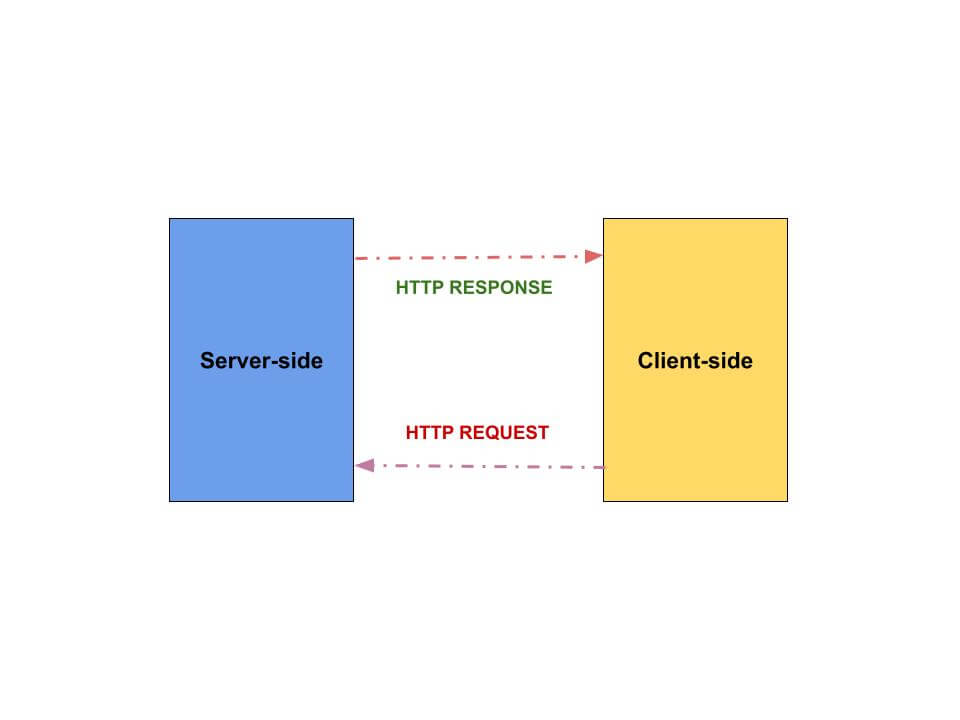Difference between HTTP and HTTPS
HTTP vs HTTPS | Difference between HTTP and HTTPS
What is HTTP?
HTTP stands for “Hyper Text Transfer Protocol”. It is a set of specific rules and standards, which control the transmission of data over the internet or the World Wide Web. These set of rules and standards, also referred to as protocol, are followed by browsers and servers alike, to communicate between them. This protocol is also followed by various systems and devices which are connected over the internet. Each command or instruction in the protocol is executed separately without interfering with the other commands.
The URL of a website running with HTTP protocol is written as: http://www.mywebsite.com/
Note: It is to be noted that Google Chrome and all other browsers flag websites running HTTP protocol as “Not Secure”.

Progression of HTTP
Since the 1990s, HTTP has undergone a lot of advancements and progressions. It has evolved continuously to ensure better performance and better service to the end users. The following are the different versions of HTTP that has been seen over the years:
- HTTP/0.9- This was the earliest version of HTTP. Initially, it did not have any version number but later it was called 0.9 to avoid any confusion with the later versions. It was the simplest version of HTTP and the HTTP request consisted of a single line. The HTTP response was also very simple.
- HTTP/1.0- HTTP/0.9 quickly evolved into HTTP/1.0 so that it can become more versatile and more adaptable. In this version, the concept of HTTP headers was introduced which was not there previously in HTTP/0.9. This feature enabled the browsers and the servers to transfer different types of documents, other than just HTML files, over the internet.
- HTTP/1.1- This was the first standardised version of HTTP introduced in 1997. This version brought a lot of improvements and removed vagueness. It had features like pipelining, additional cache control mechanisms, encoding and all. Also, in this version, a single connection could be used again with time which saved a lot of time for everyone. This version of HTTP was vigorously used for almost 15 years due to its stability and flexibility before the next and the most recent version of HTTP was introduced.
- HTTP/2- This is the most recent and updated version of HTTP introduced in 2015. It became extremely popular within one year only. Even on today’s date, HTTP is still evolving and a lot of new features, updates and improvements are expected in the newer versions of HTTP which are yet to come. New versions like HTTP/3 are already in the process of launching.
Phases of a HTTP session
A typical HTTP session generally consists of 3 phases:
- An appropriate connection is established by the client: In an HTTP protocol, a connection is established by the client which is usually done in the transport layer i.e., the TCP.
- A request is sent by the client to the server: Once the connection gets established, a HTTP request is sent by the client to the server. This request is formed of various text directives.
- The server sends the response back to the client after processing the request: Once the request has been sent by the client agent, the server processes the request and sends back the HTTP response. A response is also formed of various text directives similar to the request.

What is HTTPS?
HTTPS stands for “Hyper Text Transfer Protocol Secure”. It is simply an encrypted version of Hyper Text Transfer Protocol (HTTP). It ensures that the data which is being transferred over the internet is completely secured. Hence, it is considered to be a secure version of HTTP. All the data which is transferred through HTTPS protocol is transferred in encrypted form. In today’s world, all the modern browsers use both HTTP and HTTPS. They are marked separately by the browsers.
The URL of a website running HTTPS protocol is written as: https://mywebsite.com/

Security in HTTPS
HTTPS ensures that the security of all the data transmissions that happen over the internet is maintained by adding 3 layers to the HTTP protocol. They are:
- Encryption: HTTPS uses SSL/TLS encryption, which ensures the fact that the data transferred over the internet is not accessible or visible to any third-party sources which include hackers.
- Authentication: By using the SSL/TLS protocol, HTTPS ensures that authentication of the transmission is maintained. This SSL/TLS certificate includes two keys, which are the private key and the public key. These two keys are used by the browsers and the servers respectively to ensure that the proper authentication process is maintained at each and every step.
- Integrity: In HTTPS protocol, every file or document which is sent to the browser by the servers contain a digital signature. The browser then uses this signature to confirm the fact that the document has not been manipulated by any third-party sources. All these ensure the fact that the integrity of the protocol is maintained throughout the process of data transmission over the World Wide Web.
Differences between HTTP and HTTPS
There are a majority of differences between HTTP and HTTPS. The foremost difference between HTTP and HTTPS is the Secure Sockets Layer or the SSL certificate. Some of the other key differences between HTTP and HTTPS have been stated below in a tabular manner.
| HTTP | HTTPS |
| Full form of HTTP is Hyper Text Transfer Protocol. | Full form of HTTPS is Hyper Text Transfer Protocol Secure. |
| In the browser, it is written as http:// | In the browser, it is written as https:// |
| HTTP does not ensure security of the data transferred. | HTTPS ensures security of the data transferred. |
| The data is transferred in plain text form. | The data is transferred in encrypted form |
| It does not use Secure Sockets Layer(SSL). | It uses Secure Sockets Layer(SSL) |
| HTTP does not require validation of the domain | HTTPS requires domain validation |
| HTTP uses port number 80 | HTTPS uses port number 443 |
HTTP or HTTPS?
It is highly recommended to switch to HTTPS rather than using HTTP. It not only ensures a smooth experience but also keeps the security of the whole process intact. It is always recommended to check whether a website is using HTTP or HTTPS before exploring the website further. Also, there is a significant amount of improvement in the performance when switched to HTTPS from HTTP.